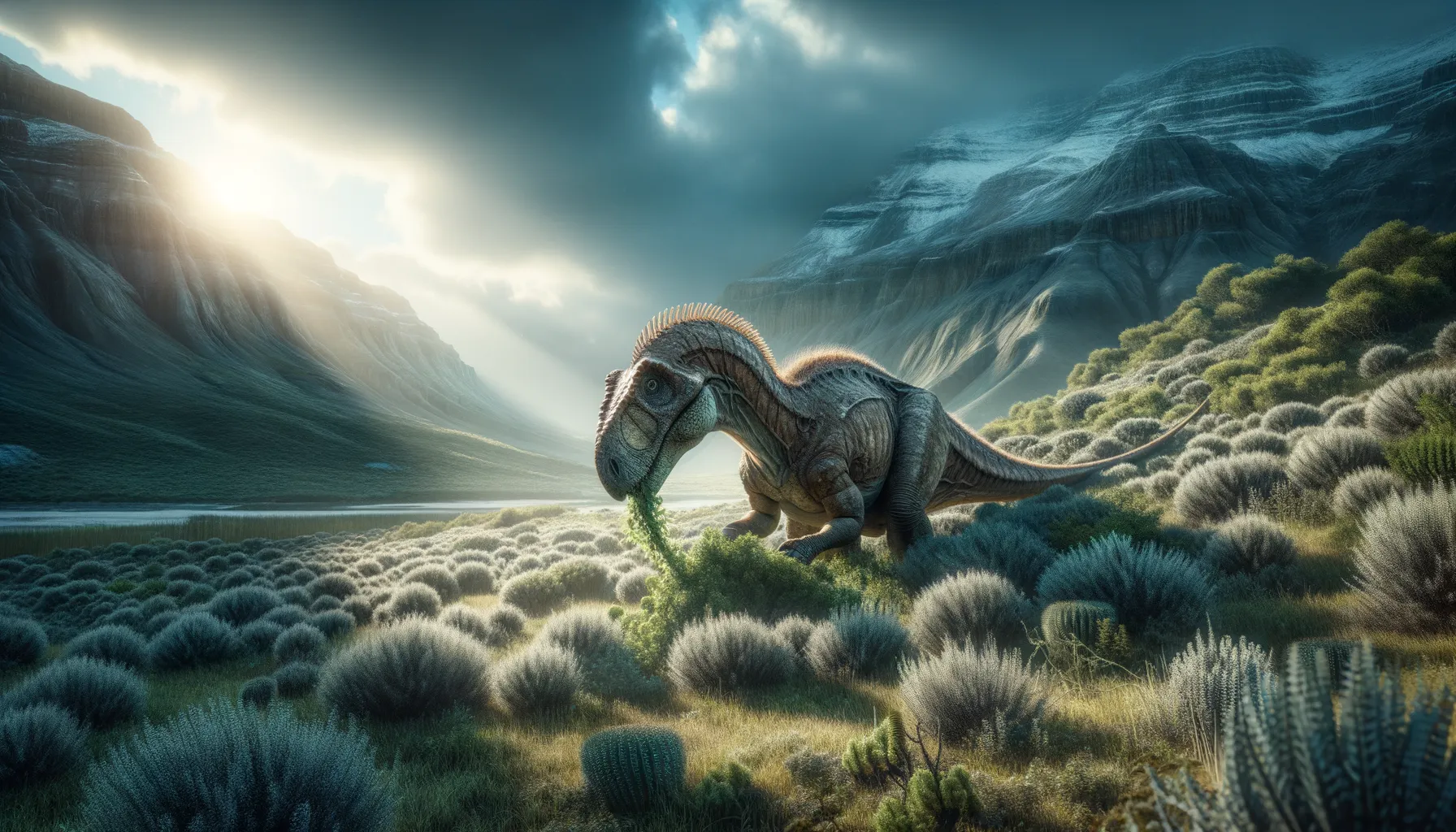
Goyocephale
Thick skull, mighty survival instincts.
Period
Cretaceous
Length
Measured approximately 2 meters in length.
Height
Stood about 1 meter tall at the hips.
Weight
Estimated to weigh around 30 kilograms.
Goyocephale was a fascinating small dinosaur known for its thickened, dome-shaped skull, a characteristic feature of the pachycephalosaur family. It roamed the Earth during the Late Cretaceous period. This dinosaur is believed to have had a herbivorous diet, which involved munching on low-growing plants. Its physical appearance suggests it might have used its skull in head-butting behaviors, a technique possibly used for communication or defense.
Diet
Goyocephale was herbivorous, primarily consuming leaves, seeds, and fruit. Its teeth were adapted for grinding tough plant material, making it well-suited for a plant-based diet in its ecosystem.
Hunting
Given its herbivorous nature, Goyocephale did not hunt for food but rather foraged. It would have focused on navigating dense vegetation to find its meals, avoiding potential predators.
Environmental challenges
One of the main challenges Goyocephale faced was avoiding predators. The thickets of ancient forests where it lived provided both food and necessary cover. Another challenge was competition for resources with other herbivores. Seasonal changes may have forced Goyocephale to migrate or adapt its feeding habits.
Speed
Goyocephale was most likely slow-moving, typical of many herbivorous dinosaurs.
Lifespan
Its lifespan remains uncertain but likely similar to other small herbivorous dinosaurs.
First discovery
It was first discovered in Mongolia in the late 20th century.
Fun Facts
- Goyocephale was a small, herbivorous dinosaur that lived around 80 million years ago during the Late Cretaceous period.
- The name 'Goyocephale' translates to 'adorned head', which refers to its bony, thickened skull.
- This dinosaur is part of the group known as pachycephalosaurs, famous for their domed skulls possibly used in head-butting behavior.
- Goyocephale's fossils were first discovered in Mongolia, adding valuable data to our understanding of Asian dinosaur diversity.
- Unlike many other dinosaurs, Goyocephale had flat teeth adapted for grinding plants and foliage.
- Goyocephale is an important species for studying dinosaur social behavior, thanks to its distinctive skull structure.
- Despite its fearsome appearance, Goyocephale was a plant-eater, often compared in behavior to modern-day herbivores.
Growth and Development
As a juvenile, Goyocephale would have relied on its parents or the herd for protection. Growth rates could have depended on resource availability, affecting how quickly it matured. The thickening of its skull dome likely developed as Goyocephale aged.
Habitat
Goyocephale lived in what is now known as Asia, particularly Mongolia. It inhabited forested areas rich in vegetation, which provided ample food. These environments also offered protection against larger predators, forming a crucial aspect of its survival strategy.
Interaction with other species
Goyocephale likely had minimal direct contact with carnivorous dinosaurs but needed to be cautious of predators. It may have shared its habitat with other herbivorous dinosaurs, leading to competition for food. Social interactions with its own kind could have involved head-butting for dominance or establishing territory.
Natural lifespan
Goyocephale had an estimated lifespan of around 10 to 20 years.
Reproduction
Goyocephale, like other dinosaurs, reproduced by laying eggs. Nesting behaviors might have included using vegetation to protect and incubate the eggs. Parental care might have involved guarding the nest from potential predators until the young were ready to fend for themselves.
Social behaviour
Goyocephale may have exhibited social behaviors such as group living for protection. Interaction with others of its kind could involve head-to-head displays. Social structures helped with defense and foraging efficiency.
Fossil locations
Fossils of Goyocephale have been predominantly found in Mongolia. The discovery location has provided significant insights into its habitat and era. Ongoing excavations in the region continue to find additional evidence of its existence.
